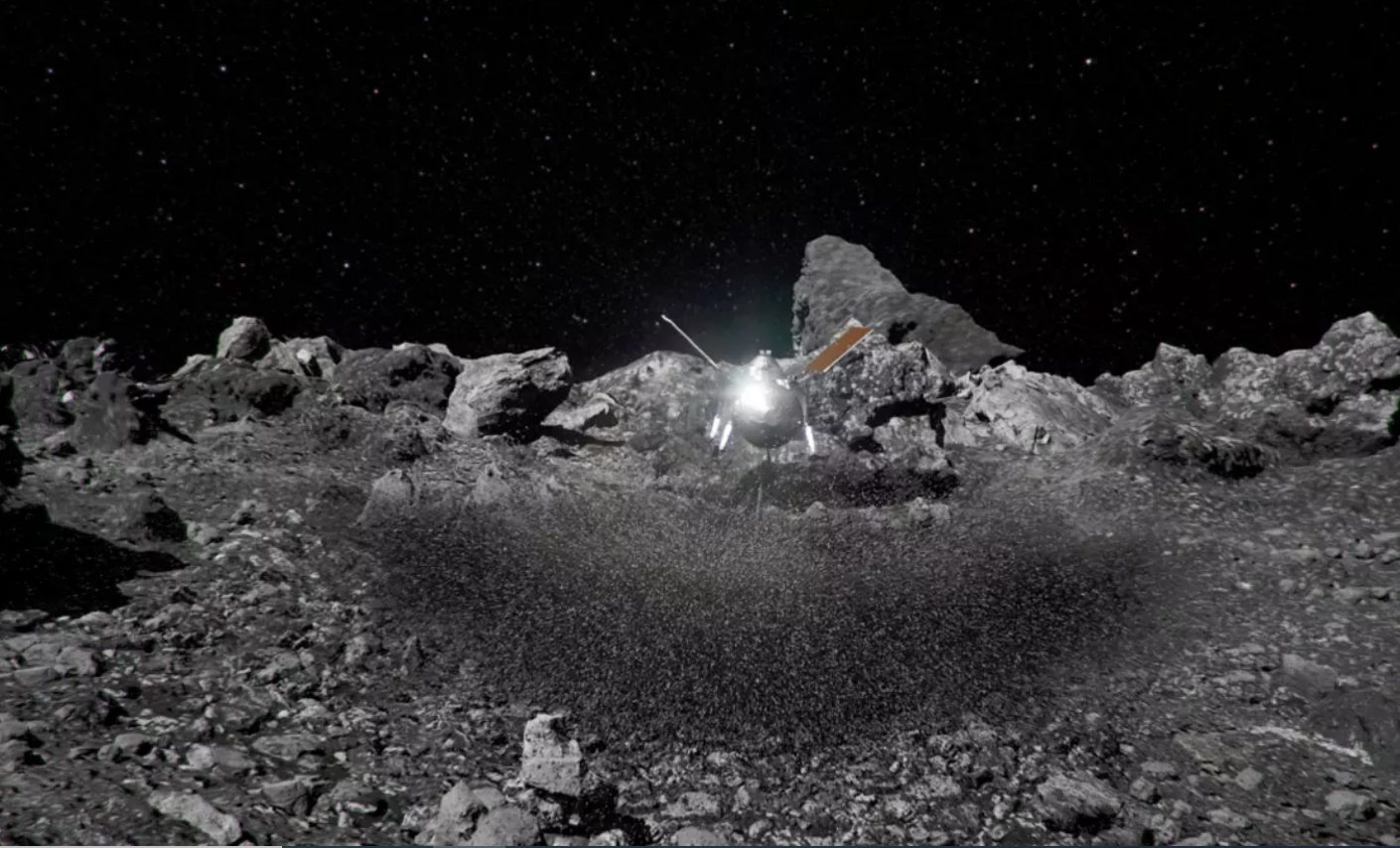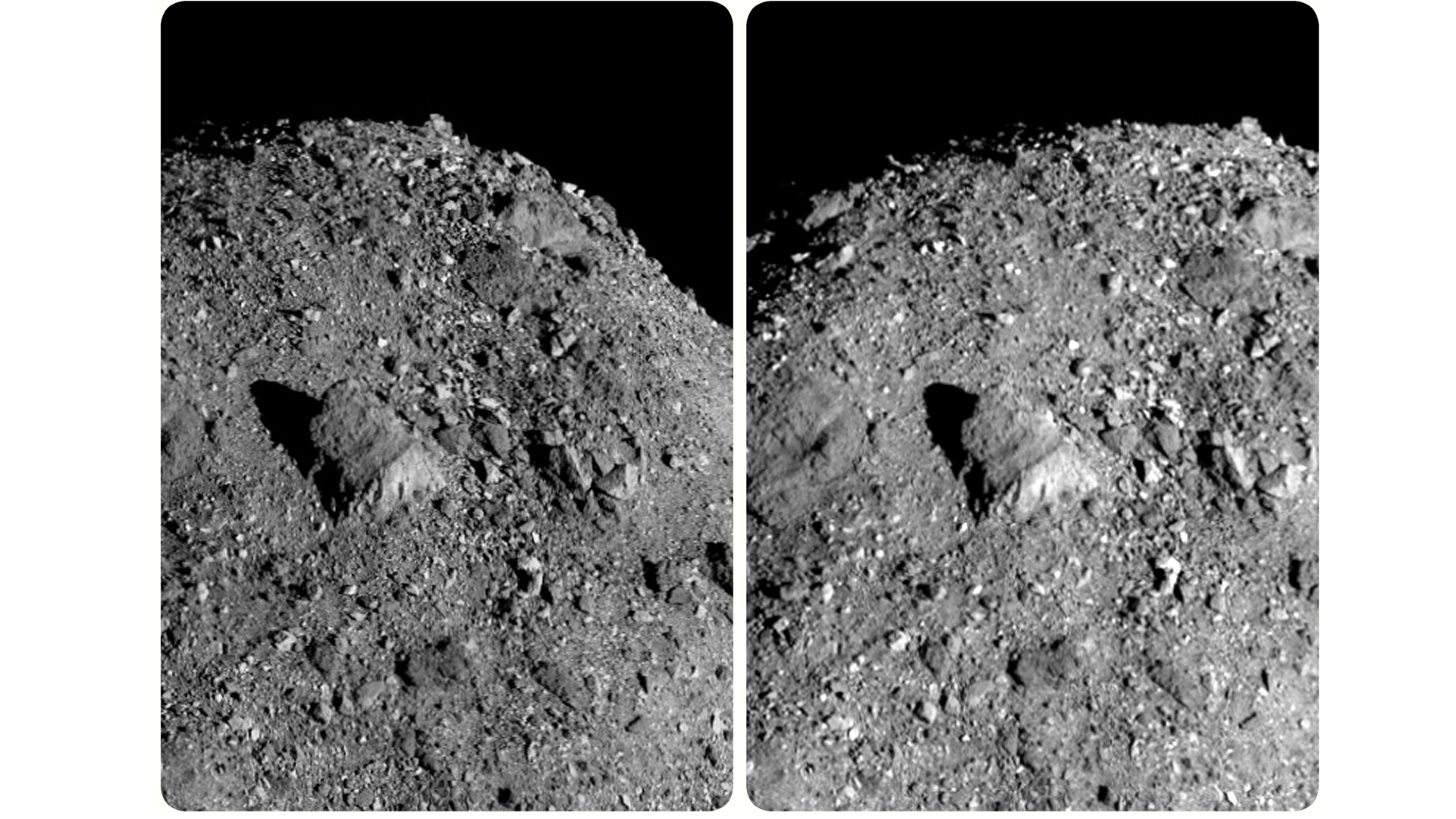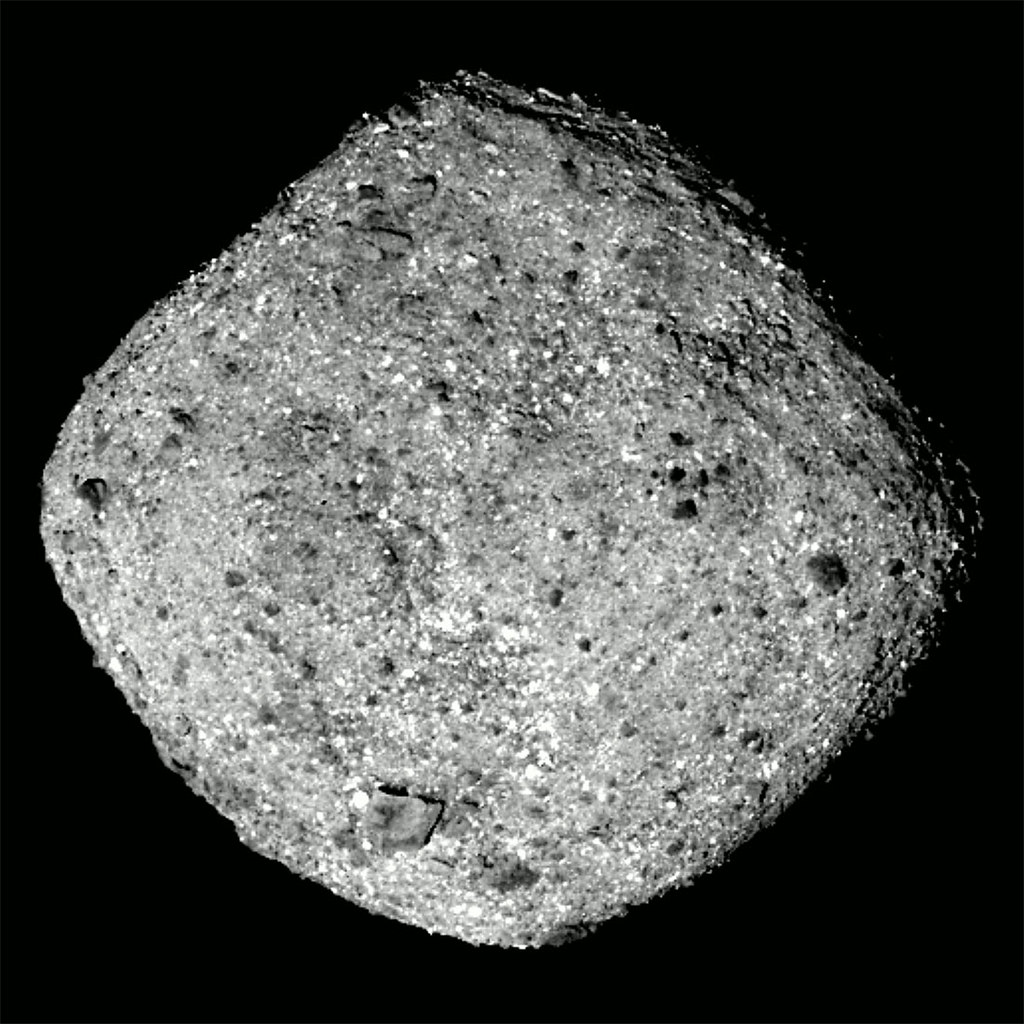How asteroid Bennu caught NASA's OSIRIS-REx spacecraft by surprise and nearly killed it along the way
Asteroid Bennu is much stranger than researchers previously thought.

When the OSIRIS-REx probe arrived at asteroid Bennu, it found a body that looked and behaved quite differently from what scientists had expected.
When NASA started planning its first mission to snatch an asteroid sample, the space rock science community was abuzz with excitement over another asteroid mission — Japan's Hayabusa. In 2010, for the first time in history, that mission triumphantly delivered to Earth a fragment of an asteroid, a space rock called Itokawa. A few years earlier, Hayabusa, had mapped the whole of Itokawa, revealing a landscape strewn with boulders but also featuring smooth beach-like plains, or ponds, of gravel and sand.
It was these images of Itokawa that guided the design of NASA's OSIRIS-REx mission. But as it turned out, despite some superficial resemblance, the asteroid that OSIRIS-REx was to head for turned out to be completely different.
Related: Queen legend Brian May helped NASA ace its asteroid-sampling mission, new book reveals
"The strategy for planning with OSIRIS-REx was to take Itokawa and all of the observations of asteroid Bennu that we had made of it before," Kevin Walsh, a planetary scientist at Southwest Research Institute and lead scientist of the Regolith Development Working Group of the OSIRIS-REx mission, told Space.com. "So we would look at the different way [the two asteroids] reflect light and the different way they reflected radar, and every indication was that Bennu would have more ponds of fine grains than Itokawa."
It wasn't until OSIRIS-REx arrived at asteroid Bennu, two years after its 2016 launch from Kennedy Space Center at Cape Canaveral, Florida that the mission team discovered that their assumptions were "totally wrong," said Walsh. Instead of wide plains of sand and gravel interspersed with accumulations of boulders, the spacecraft's cameras revealed a "bouldery hellscape" that had none of the smooth open areas on which they envisioned OSIRIS-REx to touch down and collect its sample.
The mission's chief scientist Dante Lauretta told Space.com in an earlier interview that the team had concerns the sample collection might not be possible at all.
Get the Space.com Newsletter
Breaking space news, the latest updates on rocket launches, skywatching events and more!
"When we designed the spacecraft, we had a design targeting accuracy [for the landing] of about 50 meters [164 feet]," Lauretta said. "The thermal properties, also the radar properties [of Bennu], really looked like a smooth surface. So when I first saw that [the surface was completely different], I really thought we might be in trouble there."

As the team grappled with the question whether their precious spacecraft could possibly safely touch down amid the towering boulders that rose against Bennu's feeble gravity into heights unseen on Earth, they received support from an unexpected source. Legendary guitarist of the rock band Queen and well-known astronomy aficionado Sir Brian May reached out to Lauretta to express his interest in the mission. May, who holds a PhD in astronomy, which he famously completed after a 30-year hiatus enforced by Queen's rise to fame in the 1970s, is also known for his interest in stereoscopic imaging. It was this skill he offered to the OSIRIS-REx team, which was at that time struggling to find a boulder-free-enough area to land the spacecraft on.
Stereoscopic imaging replicates the ability of human eyes to perceive surrounding space in three dimensions. Dedicated stereo cameras help Martian rovers navigate their exploration site. But the OSIRIS-REx spacecraft wasn't fitted with a stereo camera. May, however, knew his way around this issue by selecting images of various spots on Bennu taken from different angles and processing them for 3D viewing.
"Once you have a stereo image of that particular potential landing site, you can really make that instinctive judgment as to whether things are going to work out," May told Space.com in an earlier interview. "You see that there is this boulder, how much slope there is, how dangerous it is to get on and to get off."
With May's help, the OSIRIS-REx team eventually identified a sufficiently obstacle-free crater to attempt the sample collection. Still, the team had to remotely reprogram the spacecraft to accomplish the feat. Instead of the originally envisioned 164-foot-wide (50 m) landing side, the van-sized spacecraft had to squeeze into the merely 33-foot-wide (10 m) Nightingale Crater.

"When we launched, we planned to use a laser altimeter for the guidance down to the asteroid because we were expecting these big smooth areas," Lauretta said. "We just thought that we would need to know that we were coming down at the right rate towards the surface. Instead, we had to completely change the strategy, using the onboard cameras and performing an extensive mapping campaign, sometimes mapping features as small as a couple of centimeters to put into the spacecraft's memory so that it could make real decisions and guide itself down to the safe location."
The descent was smooth. But when OSIRIS-REx's sample collection device pressed into the asteroid's surface, something unexpected happened. Contrary to expectations, the surface behaved almost like a swamp. Within a few seconds, the spacecraft sank 19 inches (50 cm) deep into Bennu. As the sample collection head sucked in the sample and the spacecraft's backaway thrusters fired, a huge wall of debris rose from the crater, engulfing the ascending spacecraft.
The OSIRIS-REx team only learned about what happened when images from on-board cameras reached Earth. The researchers later admitted that the stirred-up gravel could have damaged the retreating spacecraft.
Walsh described the touchdown as "scientifically interesting, although operationally challenging." Just like the team misjudged Bennu's surface, it turned out that they also misjudged its density. The surface layer was unexpectedly fluffy, behaving more like water than solid material, something the analysis of measurements from Bennu's orbit didn't indicate.
"When we did our calculations, initially we were taking the density of all of Bennu, which is 1.1 grams per cubic centimeter," said Walsh. "But our models showed afterwards that to be able to compress the surface so much and drive the tag head so deep into the surface, the surface density would have to be like 0.4 grams per cubic centimeter. And so it was less than half as dense as the entire body."
Scientists still don't know why Bennu's surface has this waterlike quality. Walsh thinks that smaller sand-like particles may have filtered through the gaps between the bigger rock fragments into the asteroid's interior, leaving a lot of empty space in the asteroid surface layer. That would explain the unexpectedly low density of the surface, but also the overall density of the asteroid that appears to be much higher than that of the surface.
Despite the challenges, OSIRIS-REx collected much more of the asteroid material than the mission aimed for, and the spacecraft will drop off this cargo at Earth on Sunday, Sept. 24. Lauretta hopes to release the first scientific results from the sample analysis by the end of this year. And chances are that Bennu will surprise researchers again.
Join our Space Forums to keep talking space on the latest missions, night sky and more! And if you have a news tip, correction or comment, let us know at: community@space.com.

Tereza is a London-based science and technology journalist, aspiring fiction writer and amateur gymnast. Originally from Prague, the Czech Republic, she spent the first seven years of her career working as a reporter, script-writer and presenter for various TV programmes of the Czech Public Service Television. She later took a career break to pursue further education and added a Master's in Science from the International Space University, France, to her Bachelor's in Journalism and Master's in Cultural Anthropology from Prague's Charles University. She worked as a reporter at the Engineering and Technology magazine, freelanced for a range of publications including Live Science, Space.com, Professional Engineering, Via Satellite and Space News and served as a maternity cover science editor at the European Space Agency.
-
Pogo Kinda like landing in a huge box of tiny styrofoam balls. Needs really huge landing pads on long legs out the sides.Reply
Maybe ascent would work better by ‘springing’ the legs with gas cylinders to ascend a few meters, then light off the ascent engine.









